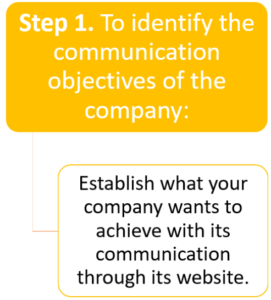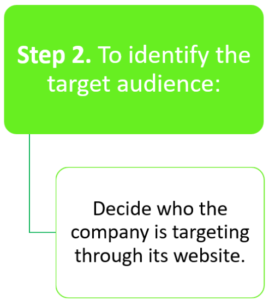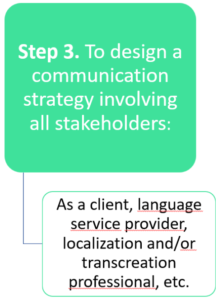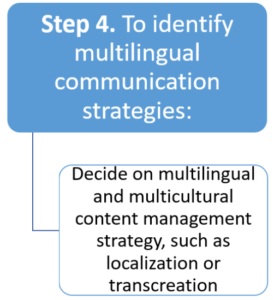Transcreation and language management of corporate websites in the tourism sector makes it possible to adapt online content to different audiences and cultures to boost internationalization processes in this business context.
During the development of the TRANSMARTUR project, several studies have been carried out that make it possible to establish and disseminate guidelines and working protocols for the advice and guidance of web transcreation specialists as well as for companies in the tourism sector (see Publications and Studies and Analysis sections of this website).
If you are a company interested in improving online communication strategies you may be wondering: what are the decisions to be taken to succeed in plural contexts -multilingual, multiethnic, multicultural, multigender- in the global market?
- Step 1. To identify the communication objectives of the company:
The first step in designing a language management strategy is to establish what your company aims to achieve with its communication through its website.

- Step 2. To identify the target audience:
This stage involves determining who the company is addressing through its website. Of course, the type of audience will be influenced not only by the communication objective mentioned in the previous step but also by the size of the company and its resources. The strategy of a multinational company with branches and subsidiaries in different parts of the world will differ from that of a small or medium-sized enterprise seeking to expand its market.

- Step 3. To design a communication strategy involving all stakeholders:
This includes, among others, the client initiating the process, communication managers from the company’s subsidiaries in other countries (if applicable), a marketing strategist for the company, a language services provider, a process manager, localization and/or transcreation professionals, and reviewers.

- Step 4. To identify multilingual communication strategies:
At this point, a decision must be made on the approach to managing the multilingual and multicultural content of the website. Several possibilities exist, such as localization or transcreation. The latter strategy involves a deep re-interpretation of all elements of the website so that it is fully immersed in the target culture. This includes creating specific content for each version of the website, incorporating the cultural values of the target culture, and designing a website with its own layout and structure.

In summary, the process of designing a language management strategy would be as follows:

Examples of good practices can be found on the website of the company Wild Andalucía. This is a Malaga-based SME dedicated to ecotourism and its website is adapted for both a national Spanish audience and an international audience using English as the language of communication.